Purple bottles, with their unique and captivating hues, have a rich and intriguing history. The story of these bottles can be traced back to the discovery of manganese’s decolorizing properties, which transformed the glassmaking process. This article will explore the origins of purple bottles, the science behind sun-colored amethyst glass, and the impact of manganese on the glass industry.
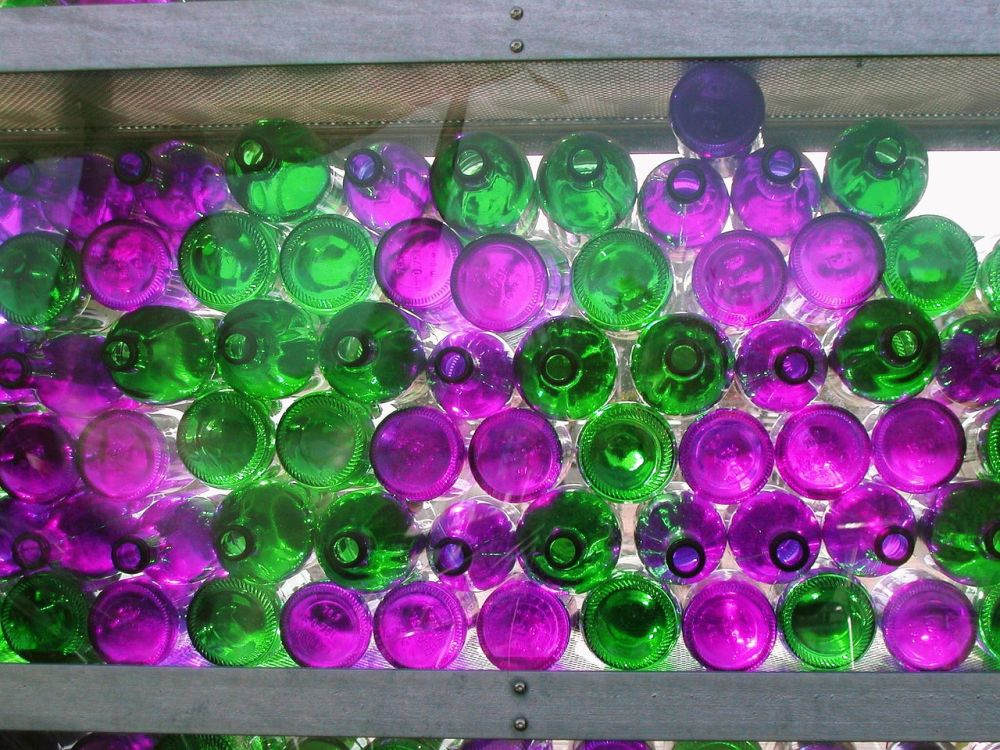
Early Discovery of Manganese’s Decolorizing Properties
In the 15th century, Venetian glassmakers discovered that manganese could be used to decolorize glass. The addition of manganese, known as “glass makers soap,” helped neutralize the effects of impurities in the sand, particularly iron. This discovery revolutionized glassmaking, leading to the development and widespread use of manganese in the industry.
The Science Behind Sun-Purpled or Sun-Colored Amethyst (SCA) Glass
The unique purple color of these bottles is a result of the reaction between glass, manganese, and ultraviolet (UV) light. When exposed to sunlight, the glass turns a light pink or lavender to moderately dark amethyst or purple, depending on the amount of manganese and UV exposure. The light lavender tint is produced by manganese offsetting the green tint of iron impurities in the sand, creating a largely colorless glass.
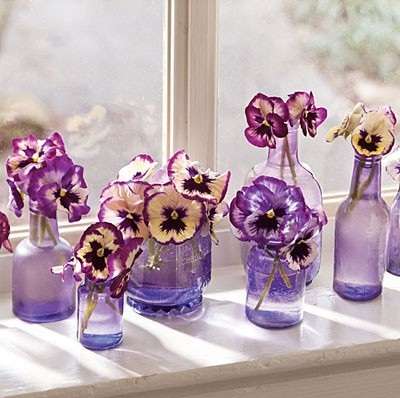
Manganese Dioxide Induced Colorless Glass: The Golden Age (1880s – WW1)
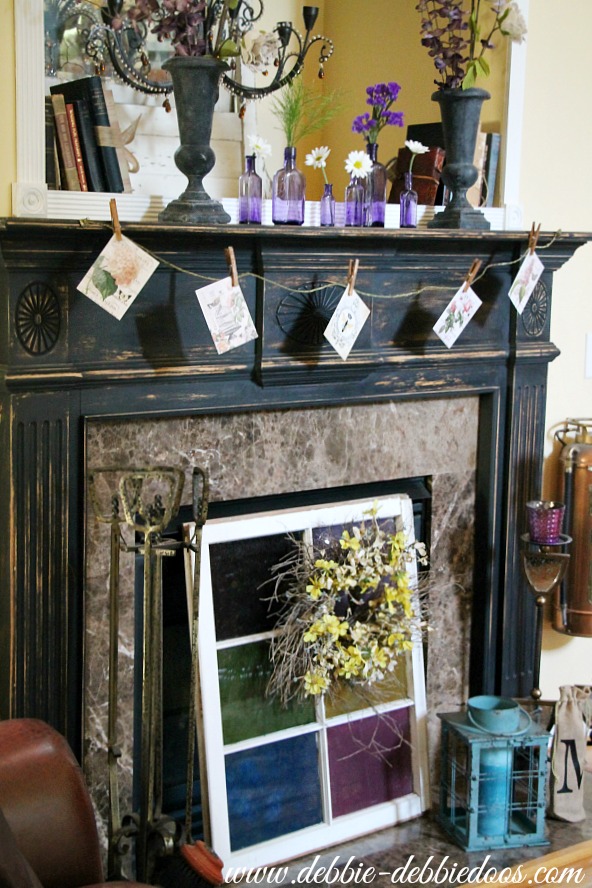
From the 1880s until the end of World War 1, manganese dioxide was the most commonly used decolorizer in glassmaking. However, its use began to decline for several reasons. Primarily, manganese dioxide was not as effective as other chemical decolorizers, especially in the open continuous glass tanks used by the increasingly dominant bottle-making machines.
Misconceptions About the Switch from Manganese Dioxide
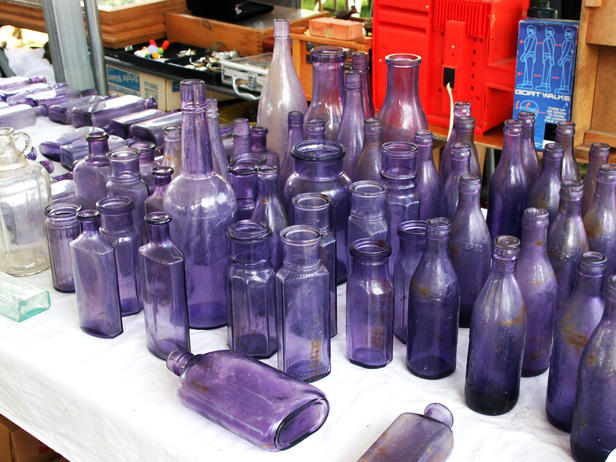
It is often noted in literature that the switch from manganese dioxide to other decolorants was due to the cut-off of German imports to the U.S. during WW1. However, this belief is unfounded. In reality, Germany was not a significant source of manganese for the U.S., providing only 2% of the imported manganese supplies in 1910. The decline in manganese dioxide use was primarily due to its inefficiency compared to other chemical decolorizers.
Dating Manganese Dioxide Decolorized Bottles
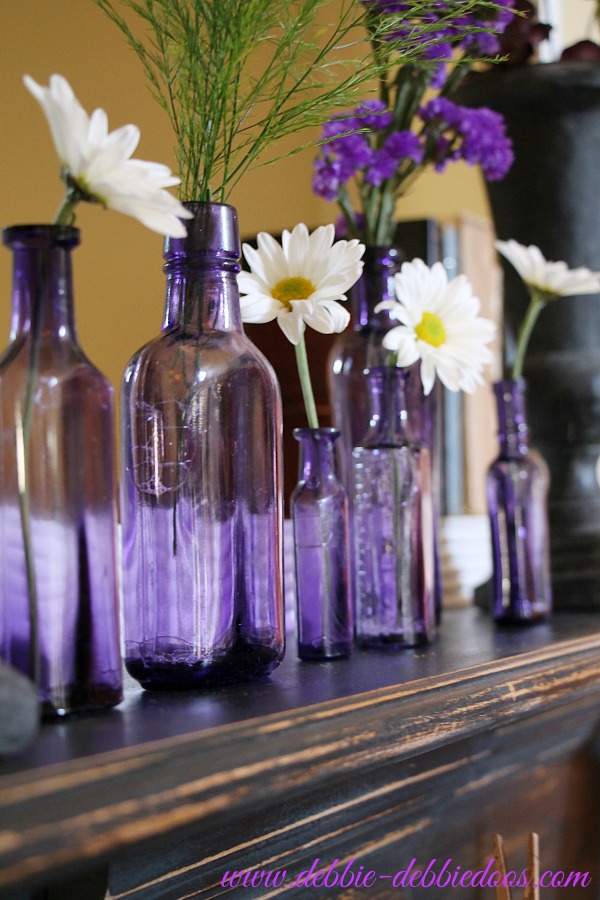
While occasional manganese dioxide decolorized bottles may date as early as the 1820s or as late as the 1930s, the vast majority of such bottles were made between 1890 and 1920. This period represents the height of manganese’s influence on the glassmaking industry.
If you have a bunch of purple bottles lying around and don’t know what to do with them, check out these DIY recycling ideas for glass bottles.


How interesting, Debbie! The purple really is pretty! Who knew so much went into making colored glass? Your bottles look great on the mantel!
It’s pretty amazing!
Very informative, Debbie! Maybe purple has transformed my soul because it’s a feel good color and makes me happy!
Great Gail, hope you learned something new today!
Your purple bottles are so pretty. I love your living room rug.
Thanks Penny, that came from Pottery barn {actually ebay} but it is is a pottery barn rug.
Very interesting and very pretty…amethyst/purple is my moms favorite color! Love the way the bottles look displayed on your mantel!
Thank you Martina!
Purple was my daughter’s favorite color when she was little so it will always be near to my heart. I love vintage bottles too. I smiled when you mentioned your coffee table. When my kids were home, mine was a lost cause!
It’s still a mess lol!
I love the history noted to the purple bottles. I did not know any of this information. And I’ve never seen a purple bottle in person. I will have to look at yours next time I come. Now I will be looking for them I love purple. As you know my purple rocker on the porch and lots of other purple stuff
Can’t believe you never noticed they Mom!
Hello Debbie,
Very interesting…….never knew about the purple bottles. Do you think this is the same way other colors are
made?????
Love your display….
I do believe so Judith!
These are gorgeous! I’m going to look for some the next time I’m antiquing to see them in person! I love them with daisies in them and along your mantel!!
Thank you Heather! They are all over the place now in purple here at least.
This the was a brilliant blog post. I love when a post is very informative.I love all the beautiful purple glass you have shown and collected.I would love to see One done in the ritz dye.now I have to go down to River Street where the guy digs them up from the beach and he sells them really cheap. Lol Great Article Thank You. Lisa
Thanks Lisa! Yes they are going up in price I see. So if you can score them cheap, grab em!
I used to have a purple bottle. Now I wonder what ever became of it. This is so interesting!
So glad you learned something new Shannon!
interesting article!
I was trying to find a value for my purple’ fishbowl’
its large and beautiful….but looks like a fishbowl no matter what I do with it
Thanks for the info. Many years back, I was in Wyoming’s Powder River Breaks, and found a dirty, calciym caked light purple, almost violet, glass bottle witg a threaded top. Put it into my pack, brought it home and mostly forgot about it until cleaning and downsizing.
Appreciate the information on hiw it got the color it is.
Folks need to be aware that their is a cottage (greedy) industry out there purposely exposing antique glass to a germicidal black light irradiating it to speed the purple color process artificially. This glass typically takes on a very deep coloring. Sellers dont tell you that they have just totally devalued the glass and no knowledgeable collector will buy it. Just a heads up. Great article!
Folks need to be aware that there is a cottage (greedy) industry out there purposely exposing antique glass to a germicidal black light, irradiating it to speed the purple color process artificially. This glass typically takes on a very deep coloring. Sellers don’t tell you that they have just totally devalued the glass and no knowledgeable collector will buy it. Just a heads up. Great article!